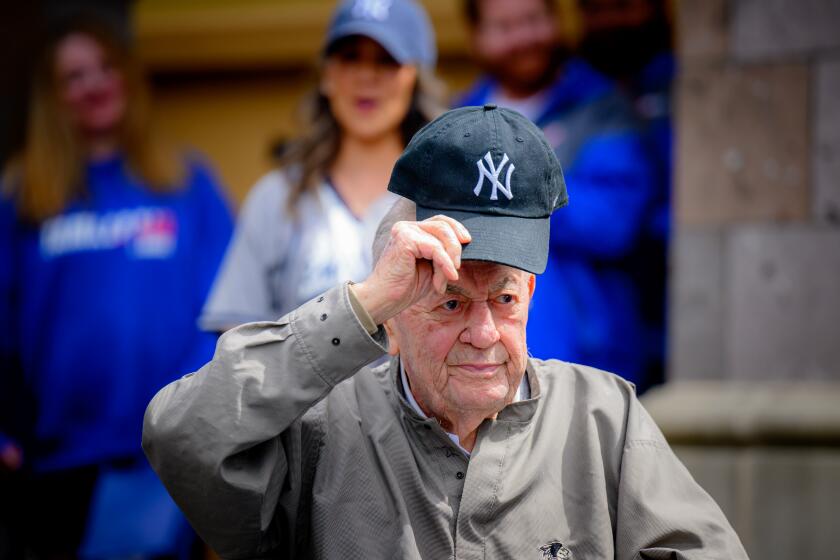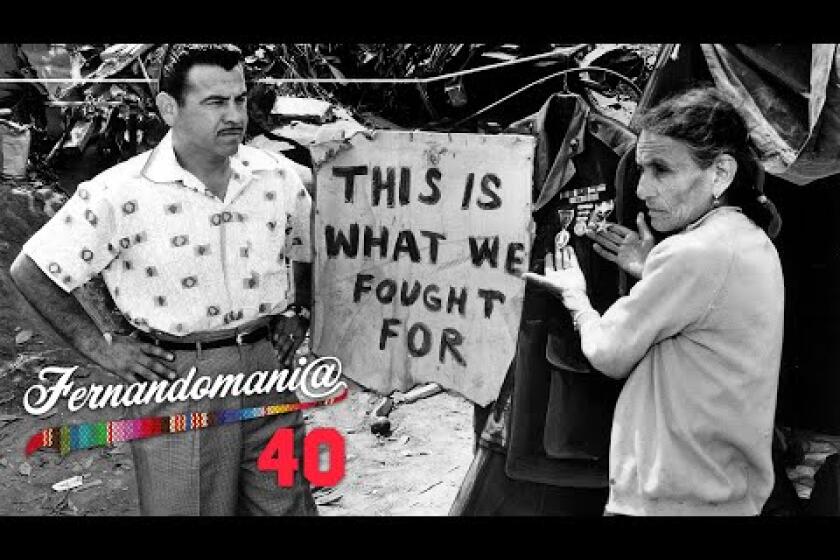Birthday gift to Hall of Fame: Legendary Dodgers owner Walter O’Malley’s archives
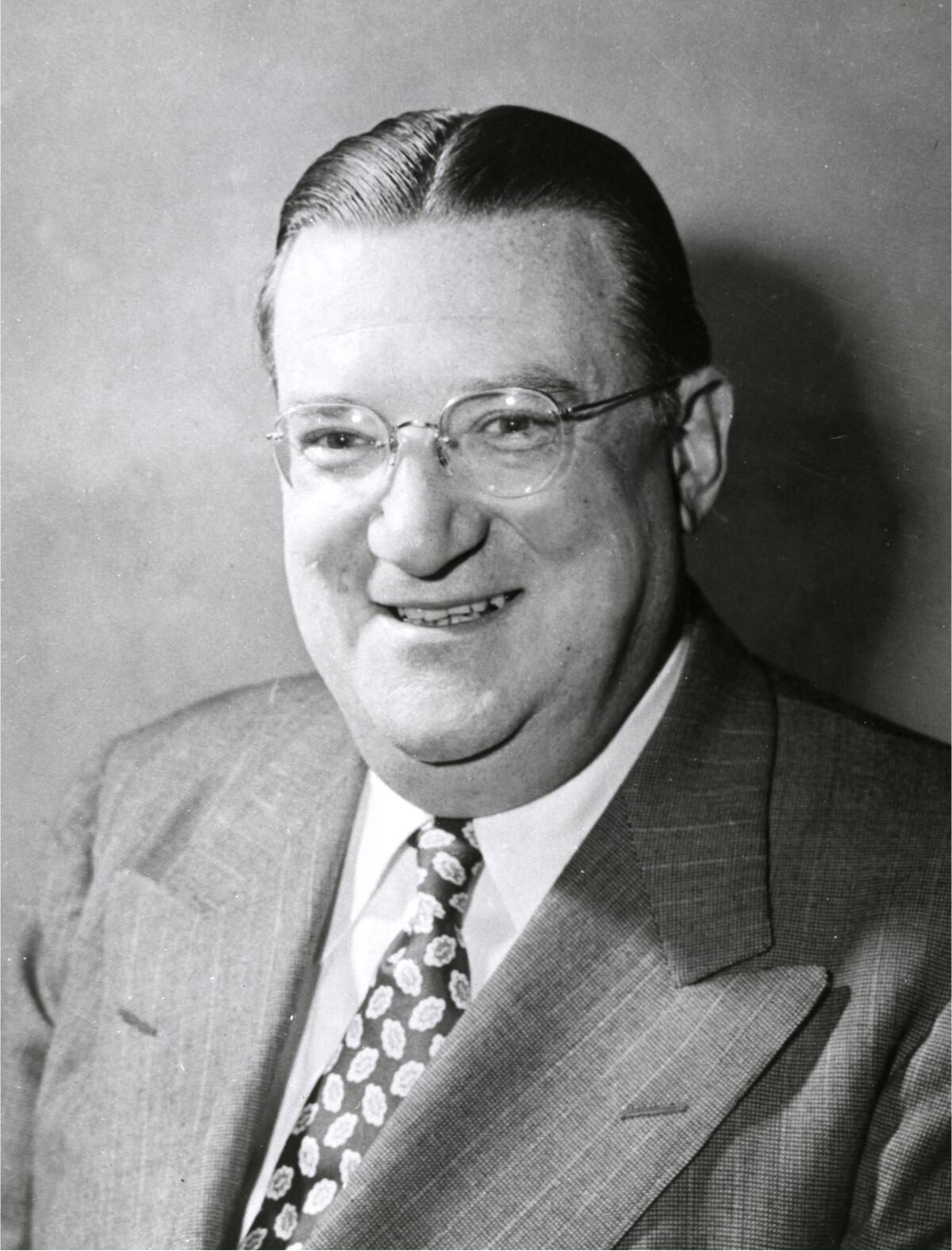
- Share via
The National Baseball Hall of Fame and Museum turned 85 on Wednesday, and a birthday gift as weighty as it was generous was dispatched to Cooperstown, N.Y., by the family of legendary Dodgers owner Walter O’Malley.
Seventy back-breaking boxes of documents and photographs comprise the Walter O’Malley Archives, providing a road map of the Dodgers franchise from Brooklyn, N.Y., to Los Angeles by way of annual spring training in Vero Beach, Fla.
The cigar-chomping, unfailingly upbeat O’Malley owned the Dodgers from 1944 until he died in 1979 and was inducted into the Hall of Fame in 2008. The archive was assembled and curated by Peter O’Malley and Terry O’Malley Seidler, Walter O’Malley’s son and daughter who took over leadership of the franchise after their father’s death.
“There are a lot of things in those boxes, a lot of paper,” Peter O’Malley told The Times. “I know what is there. In my opinion, it’s an extraordinary collection. It’s about the franchise on his watch as well as insights into him.”
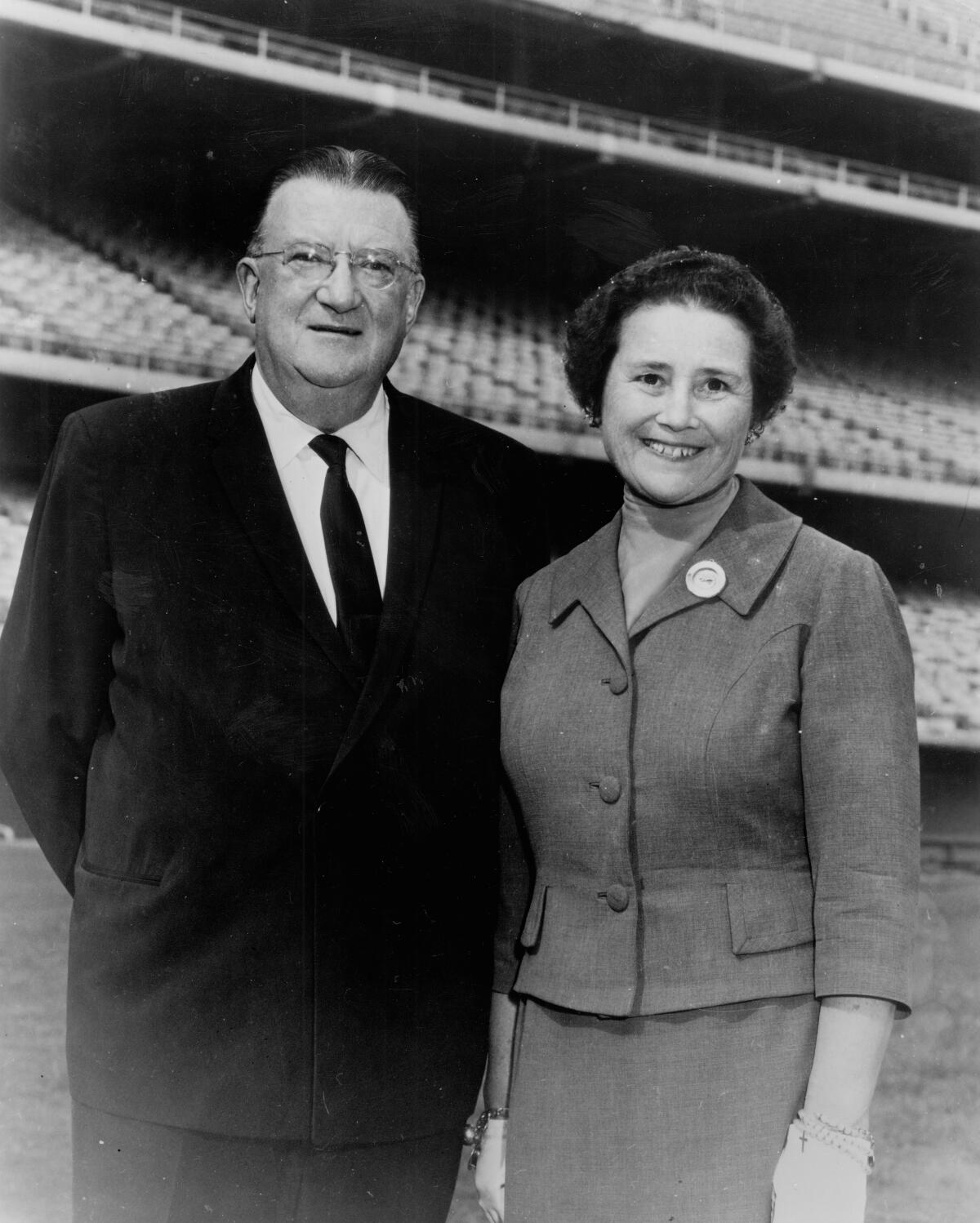
Doing all that paper justice will take time, and that’s just what the Hall of Fame can provide. Known primarily for its splendid displays of memorabilia that tell the stories of baseball greats and the history of the game, the Hall of Fame also includes a research library containing more than 3 million documents, 250,000 photographs and 16,000 hours of recorded media.
Peter O’Malley, 86, said he has long admired the Hall of Fame, and, while downsizing a home office last year, concluded that his father’s meticulously kept and curated archives should reside in Cooperstown.
“We asked ourselves, ‘OK, what are we going to do with all of this?’” Peter said. “I’m a big fan of the Hall of Fame. It’s an extraordinary treasure, and we made the decision that it all belongs there.”
Signed by the Dodgers, Art Schallock won three World Series titles with the Yankees. The oldest living MLB player, now 100, counted Mickey Mantle and Yogi Berra as friends.
Peter received an enthusiastic response from Hall of Fame President Josh Rawitch, whose career began in the Dodgers’ media relations department. The thought of obtaining a Hall of Fame executive’s files in mint condition was thrilling.
“When you get to see the papers up close and personal, you see what [Walter O’Malley] was like as a person and what the world was like in the 1940s, ’50s and ’60s,” Rawitch said.
Of particular note is O’Malley’s hand-written and typed correspondence in a pre-digital age — his efforts to keep the franchise in Brooklyn amid an eventually scuttled plan to build a domed stadium there; the politics of his his audacious notion to move the team to L.A. and build Dodger Stadium in Chavez Ravine; breaking the color barrier with the signing of not only Jackie Robinson but Roy Campanella, Don Newcombe, Maury Wills and other Black players; the creation of Dodgertown in Vero Beach, the first fully integrated spring training facility in the South; and developing relationships with Japanese baseball executives by repeatedly making visits, including twice hauling the entire Dodgers team across the Pacific for goodwill exhibitions.
Also tucked in the boxes are O’Malley’s appointment books from 1934 to 1979.
“It’s a common thread and absolutely amazing,” Peter said. “In 1934, he buys a date book, and every year thereafter he buys an identical one except for the year on the cover. Everything he did, every meeting, every phone call, was documented.”
Debunking myths and looking back on Dodger history and Walter O’Malley.
Not everything is as dry as appointment books. Long before texts and email, personal letters were the preferred mode of communicating with friends and business associates. Missives to and from O’Malley with a broad range of baseball and show business elites — Babe Ruth, Casey Stengel, Frank Sinatra, Johnny Carson and Milton Berle to name but a few — are mostly brief and often pithy, resembling text messages without emojis but with just as many misspelled words.
“We didn’t know anybody in California when we moved here,” Peter said. “The sense of humor in the letters he exchanged with politicians, actors, writers and baseball folks helped him make friends.”
The Dodgers have their own archival collection of items from O’Malley’s ownership and much of it is on display throughout Dodger Stadium but primarily on the club level behind the press box. The O’Malley gift to the Hall of Fame is a combination of personal and business correspondence.
All of it should shed light on the towering presence of O’Malley, who was beloved by Dodgers players, employees and fans for his compassionate leadership and attention to detail. He was, however, reviled in Brooklyn, blamed for moving “Dem Bums” to L.A.
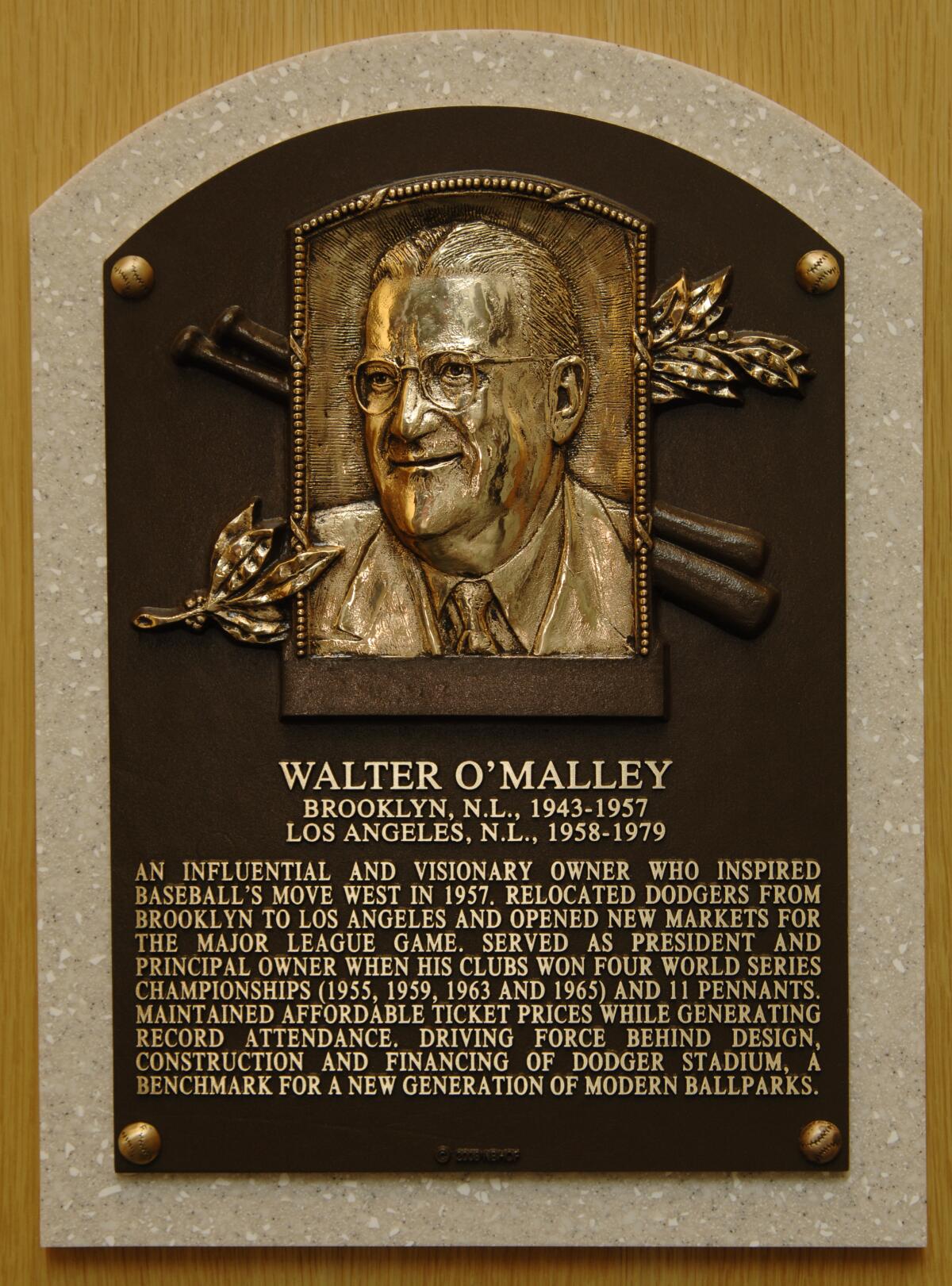
In explaining why one of the most influential owners in baseball history was not elected to the Hall of Fame until nearly 30 years after his death, Peter pointed to lingering resentment over the Dodgers departure from Brooklyn. Documents in the archives, he believes, tell a different story.
“I don’t think anyone worked harder to keep his franchise in the original city than he did,” Peter said.
A 2020 book examines the lives forever changed by the building of Dodger Stadium, which would be brought back into focus with the rise of Fernando Valenzuela.
O’Malley and the Dodgers were welcomed in L.A., although how Chavez Ravine became the site for Dodger Stadium is a stain on the city’s history. The area was populated mostly by lower-income Mexican Americans who had been barred by discriminatory practices from living elsewhere in the city. In 1950, eight years before the Dodgers relocated from Brooklyn, L.A. housing officials decided to turn the area into a huge public housing project and forced existing residents to relocate by buying their homes for below-market cash offers or by taking properties through eminent domain proceedings.
By the time the Dodgers moved to L.A. ahead of the 1958 season, the public housing plan had been scuttled and Chavez Ravine sat empty. O’Malley saw it as an appealing location to build a baseball stadium, worked a sweetheart deal with the city and sweated out a referendum on the June 3, 1958, ballot that narrowly passed. Dodger Stadium opened in 1962.
Peter O’Malley believes his father’s archives help decipher the sequence of events that resulted in the stadium being built on ground unjustly taken by the city years before the Dodgers moved to L.A.
“Chavez Ravine, the facts are the facts, and we have the facts,” he said. “Particularly today, that’s appropriate. The [other MLB] owners gave him approval to move. The files show he was thinking about Wrigley Field or the Coliseum or the Rose Bowl, and the public housing issue occurred long before he’d ever heard of Chavez Ravine.”
The Baseball Hall of Fame will no doubt recognize Walter O’Malley as the owner who brought the major leagues to the West Coast and made America’s pastime truly national.
Scholars, historians and plain old baseball buffs will have ample opportunity to examine every document in those 70 boxes. The Hall of Fame invites one and all to visit and stay a while.
“We are honored to accept this remarkable donation and are grateful in so many ways to the O’Malley/Seidler family for their longtime support of the National Baseball Hall of Fame and Museum,” Hall of Fame board Chair Jane Forbes Clark said.
“During Walter O’Malley’s stewardship of the Dodgers, the franchise was at the center of many of baseball’s most historic moments on and off the field. ... [The archives will give] researchers and historians a firsthand look at events that changed the face of the game.”
More to Read
Go beyond the scoreboard
Get the latest on L.A.'s teams in the daily Sports Report newsletter.
You may occasionally receive promotional content from the Los Angeles Times.
